Exploring the Sapta Swaras as a Family
By Priya Nagesh
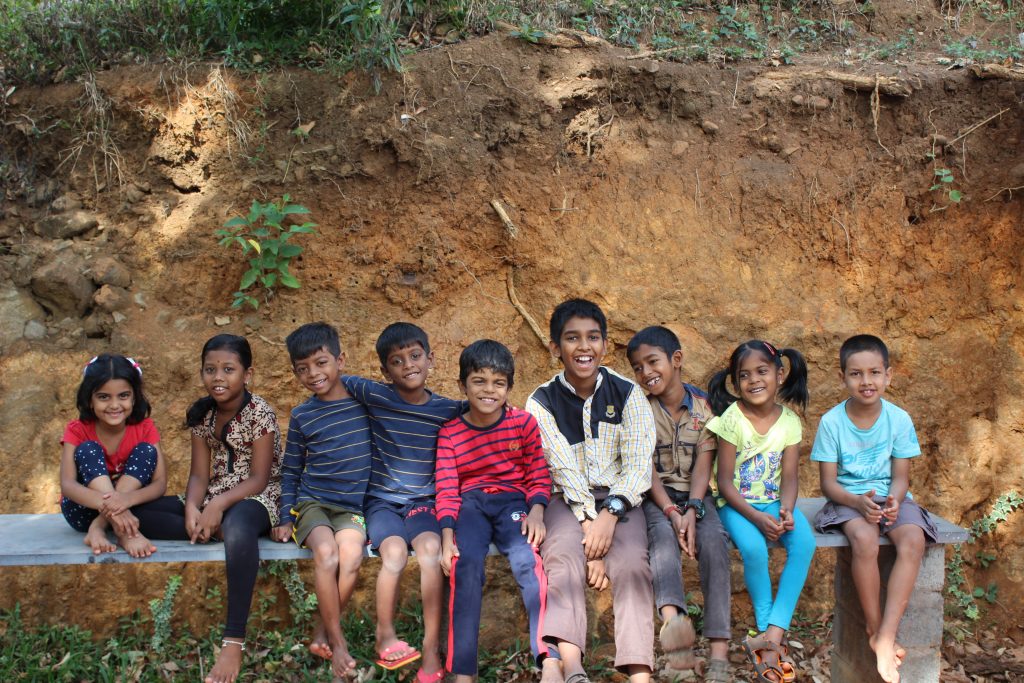
During the first week of May, Ritambhara Ashram hosted a Family Saptaswara– an experiment of sorts where the Saptaswara framework was improvised in two ways:
a) for the context of parenthood/family and
b) for children.
The program included some sessions/activities in parallel for parents and children and some together. 17 adults and 11 children in the age group of 7 – 11 years actively participated. There were also 3 just-out-of-toddler stage kids, moving in and out, lending delight like the cashew toppings on a bowl of the sweetest jaggery pongal! (One of the parents took charge of being with these younger kids).
This post highlights some of the experiences and learning that emerged from this program. The sessions for children included games, story-telling sessions, nature walks, a treasure hunt, songs, dance, arts and crafts, asana-pranayama sessions, chanting and so on.
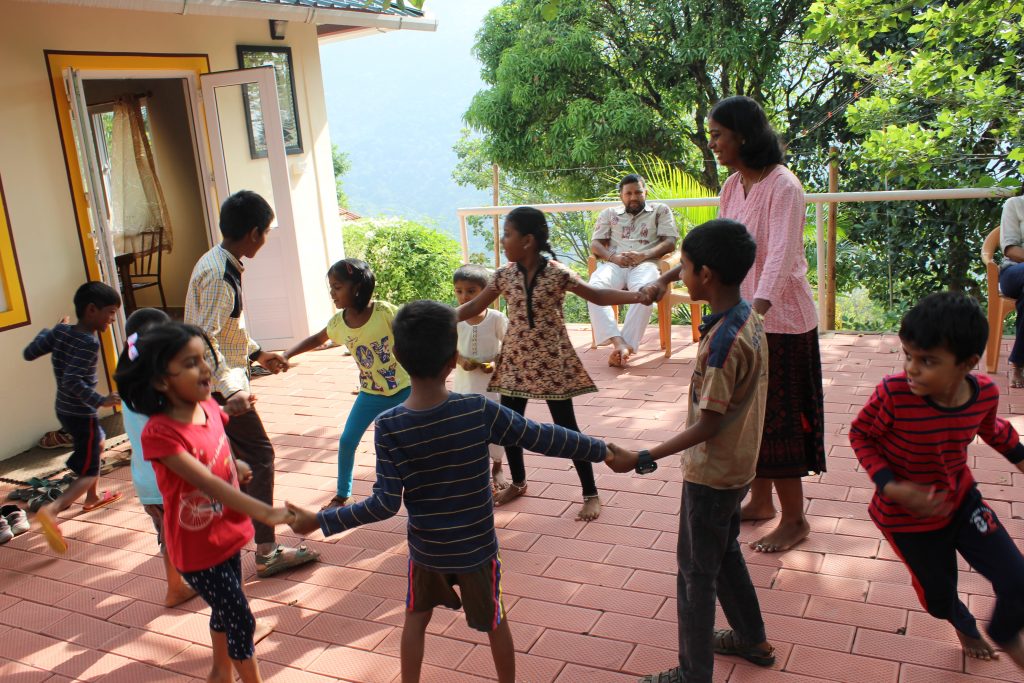
While on the surface, these activities seem like the fun-filled conventional activities that children usually do, what made all the difference is the reflectivity, self-enquiry and learning that the Ritambhara processes bring into every moment lived.
Born out of an immersion into the praxis of Yoga and an Indic ground, the Saptaswara framework brings alive every activity, tool, method, exercise, task with an exploration into the svara(s) of life
- maitri (friendliness)
- karma (action)
- dharma (enlivening self and context / responsibility)
- gnyAna (knowledge)
- ramya (evocation and aesthetics)
- yoga (mindfulness) and
- abhyAsa (practice).
Learning From Our Children
Some reflections and insights that arose during that discussion were as follows:
- Children reflect for us what we need to examine in our spiritual journey. Even in this fragmented world, they can still dance to an inner rhythm of harmony and are much closer to a here-and-now encounter with themselves. All we need to do is trust them, nourish this spiritual quality and learn from it.
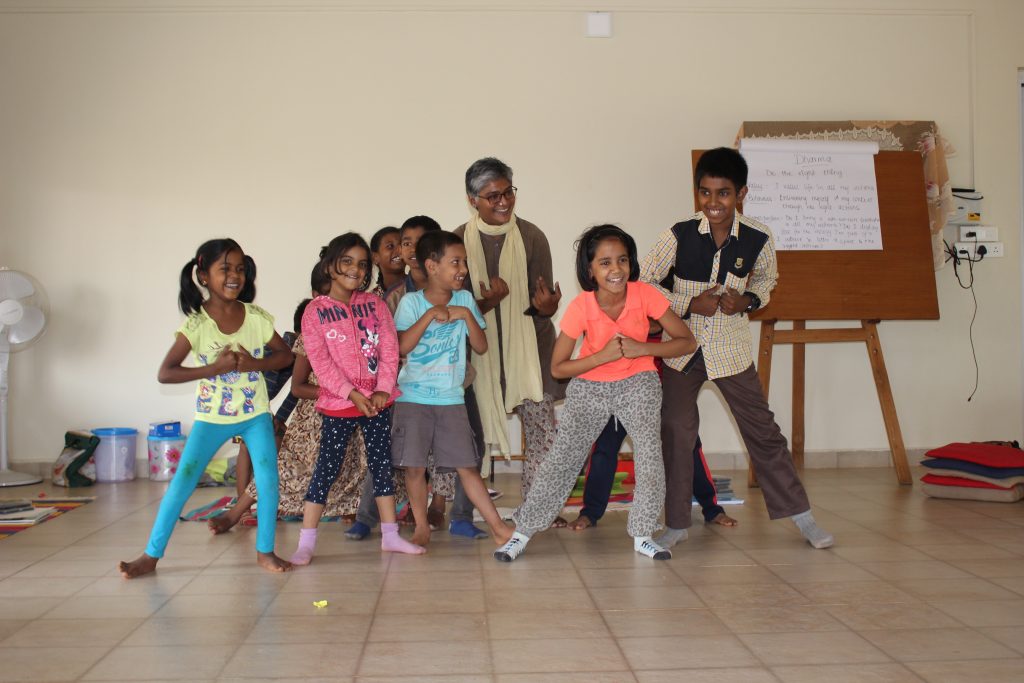
- Children and adults are co-learners. It is of utmost importance that we as parents and teachers, are constantly in Abhyasa ourselves, and examine our actions in the light of the values that we hold, besides examining those values as well. This can be the most effective way of teaching – learning and practicing to be.
Here are two stories to give a flavour of the sessions I facilitated with the children.
During the session on maitri, I told them Krishna and Sudama’s story after a game. We then sat around and each one shared a story about one of their friends, and why he/she liked that friend and so on.
Their conversation gradually boiled down to just one question – whether we love a friend for who he / she truly is, or because they do something for us. They proceeded to answer their own question, saying “Both!”
I asked them, “What happens if you love a friend, and then after some time he / she starts doing things that you don’t like, or telling you things that you don’t want to hear?”
One of them piped up saying, “Oh, I already have a friend like that. She keeps telling me all the things I don’t do right, but she is still my friend, what to do.” The rest of them nodded sagely to this.
I was awestruck by the friendliness that existed during this entire conversation despite many differences.
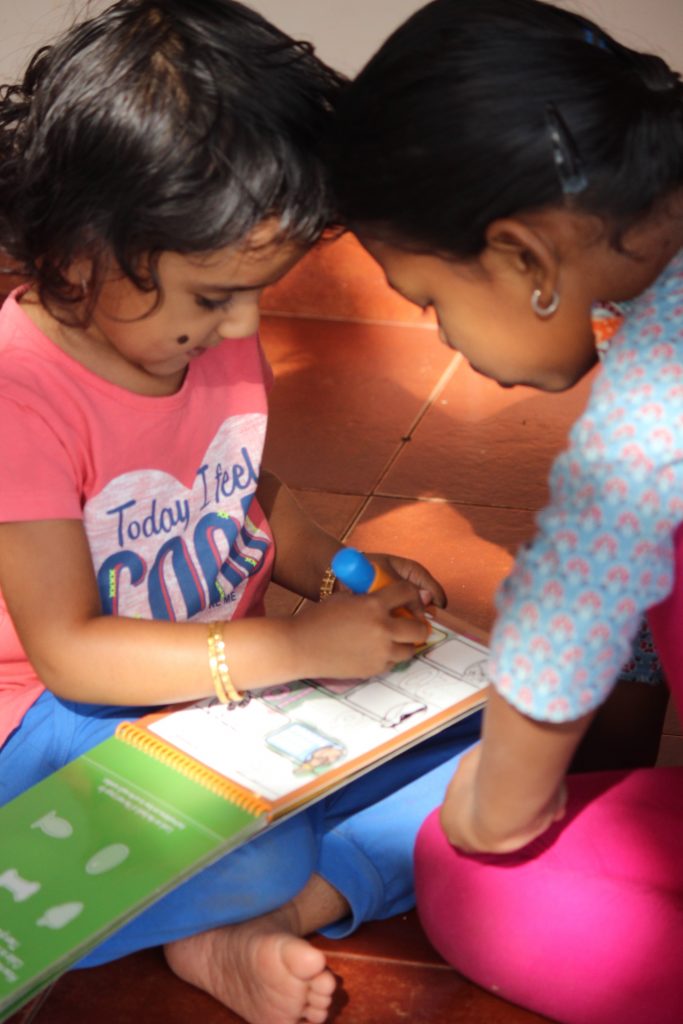
During the Dharma session, we went for a walk outdoors. Each collected their own stock of articles of Nature (twigs, seeds, dried leaves, stones…), to make a Mandala. When I told them that each of us will take our turns and add to the mandala one at a time, they decided unanimously that the sequencing will be from the oldest to youngest, and that as the oldest I had to place the first object.
After the first round of this sequence, the process of creating the mandala just took over. Everyone started placing objects and filling the gaps by themselves. The individual collections of materials mixed up to become one pile of collective resources that everyone picked from. Gradually, 4 of the kids owned up to how it was shaping. Others went in and out at different points according to interest and inclination. Some others got into support tasks like sorting and categorising the materials.
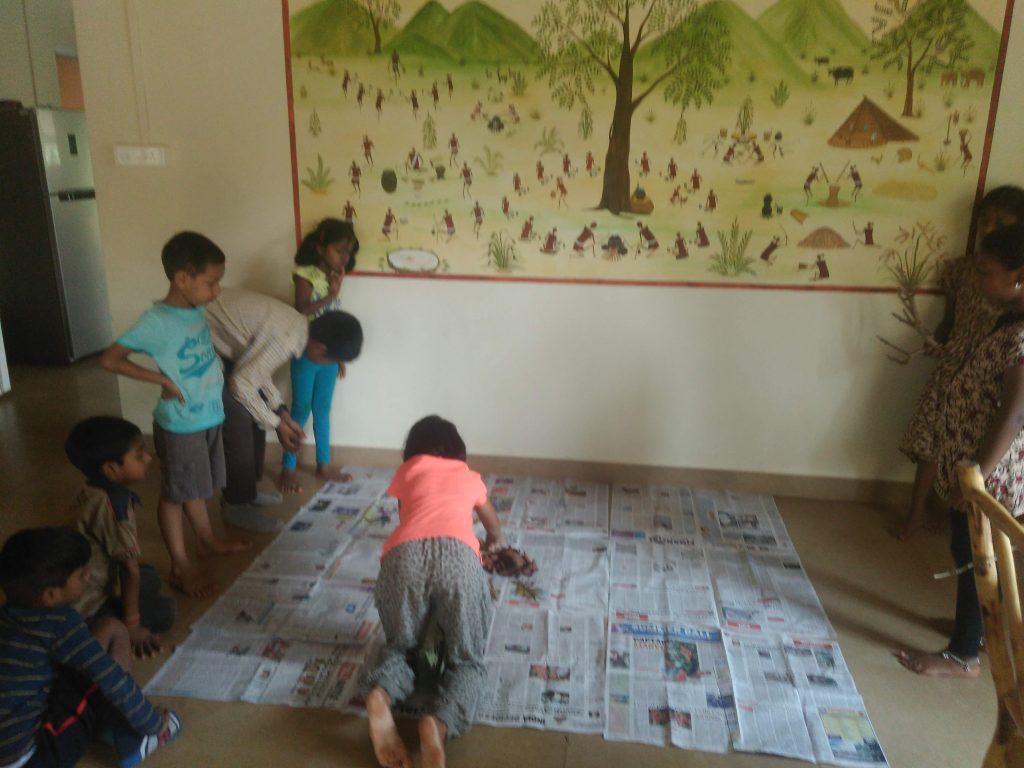
I just took part in all of it, and was also given the job of sweeping the space around the mandala so that it could be neat. It was like watching an orchestra – not one child hit or stepped onto another, they just glided around each other! The outcome looked fabulous and the parents were awestruck.
However, what I think is important is that none of us had been bothered about the outcome of how it would look and that we have to exhibit it to the parents, while we were at it. To invite the parents to come and see it happened as a natural extension and consequence of completing the mandala. I believe that we experienced a truly dhArmic process.
Remembering Ourselves as Nature’s Children
Additionally here are specific points that have stayed with me, which I believe must be brought into our consciousness and examination of our relationship with the world around us.
- Children are miracles that the highest force manifests. Each one of us has a child within, an unfolding treasure, and this life can be an exciting treasure hunt (like the treasure hunt we experienced at the program).
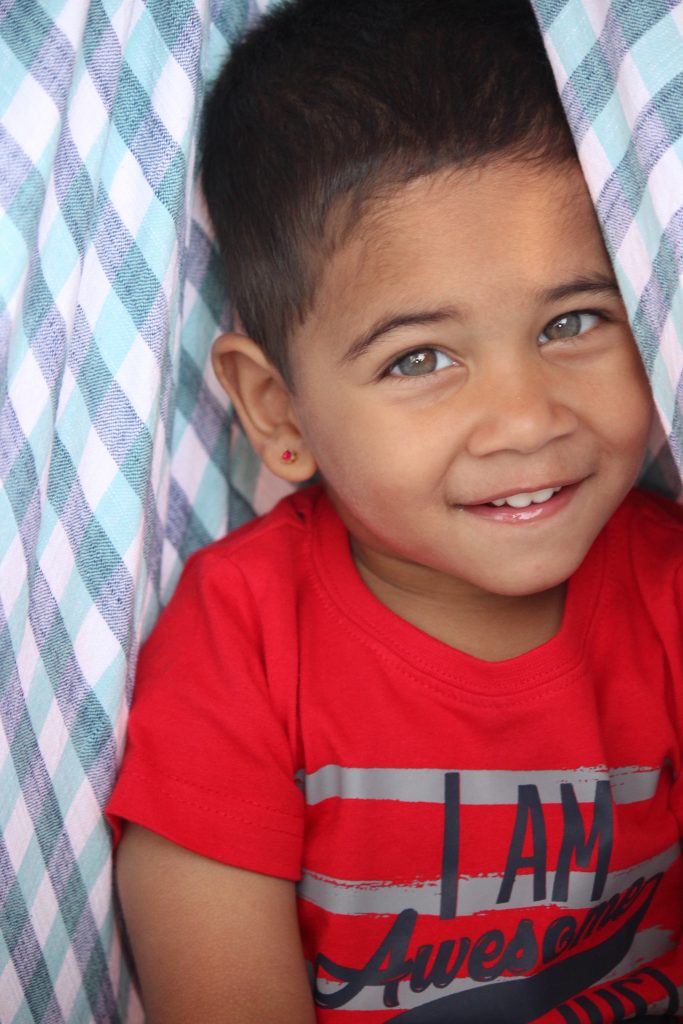
- Nature and Earth is a mother, the largest gross context that we exist in. Awareness of her energy and fostering a living in harmony with Her cannot be overstated. Asana-pranayama in the presence of the rising Sun from behind the mountains, conversations about how each one of us is a piece of the Sunshine, exploring the secrets of forest rhythms and listening to their mysterious sounds, the nature walk where we interacted closely with nature and her odds and ends, a campfire and the fascinated discussion about the bug which “committed suicide” by flying into the fire – all this lent vibrancy and Life to our party! Nature is the best teacher and she held us in her lap while we did our reflective fun and frolic.
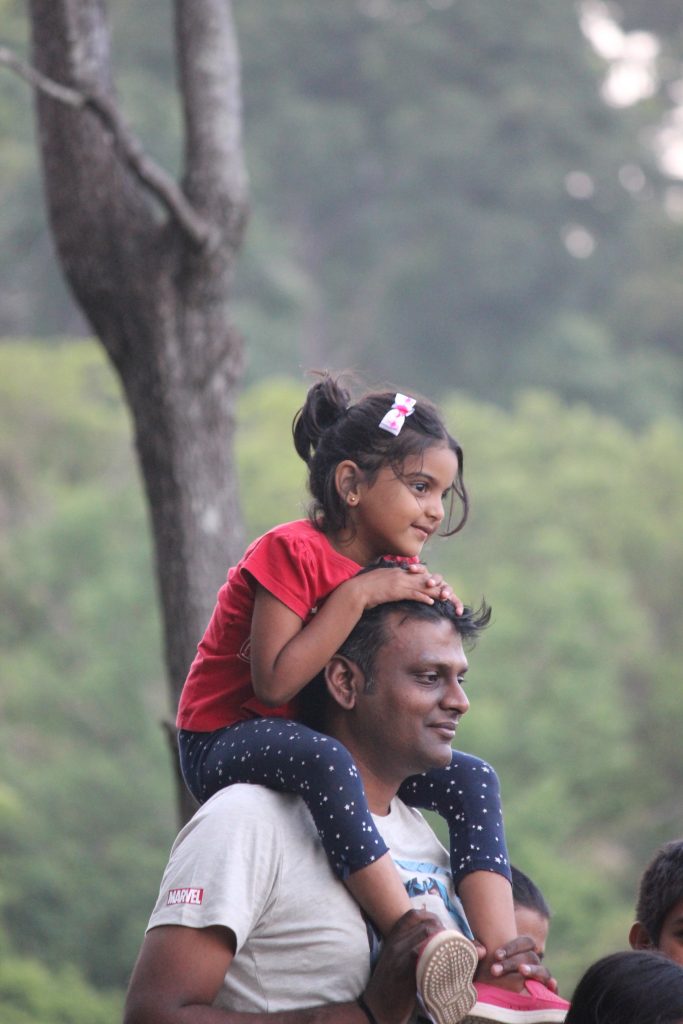
- The Prana (life force energy) flows through all of Creation, and also, I believe, in the things created by us! Every encounter is an exchange of this Prana and I am left questioning the ends of an ‘individual’. Where does one end and the other begin? The children and parents were in parallel, separate programmes so to say, meeting during the breaks and at the end of the day. However, all of us at the ashram – parents, children, facilitators and support staff, and visitors – were breathing in and through the same energy field, being shaped by and shaping it. This was evident in and through the synchronicity of our emotions, thoughts and experiences.
The whole program with parents and children was flowing free without obstruction, giving life, because we were all encountering each other in meaningful, primal ways, held by the dhArmic force of Nature, and blessed by the Ancients through Yoga, vAstu, music, and many stories from the itihasa-puranas and our own lives.

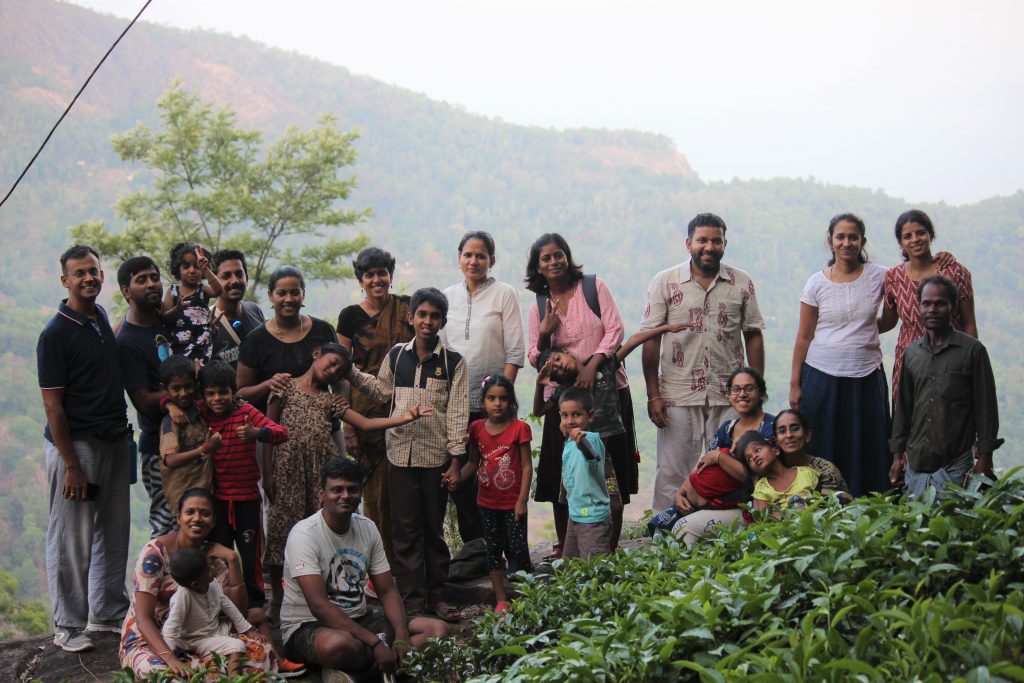
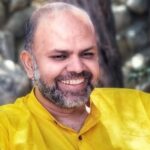 Anoop is a student of Yoga, an entrepreneur, a coach and a father of two young boys. He has led successful leadership stints in both the corporate and non-for-profit sectors. On encountering the country’s water/farmer crises at close quarters, he decided to pause and examine the impact various ‘isms’ – capitalism, colonialism, etc., were having on us as individuals, families, the society and the environment at large. This quest led him to formally engage with traditional Indic knowledge systems while also learning from the latest advances in science – about our physical and mental wellbeing, importance of body and mind work in healing trauma and the urgent need for a conscious rebuilding of family / work / social structures if we have to thrive individually and collectively. Insights, frameworks and processes gleaned from these on-going studies, an anchorage in his own personal practice and his wide-ranging experiences is what Anoop brings to facilitation/coaching spaces in Ritambhara and his various professional engagements.
Anoop is a student of Yoga, an entrepreneur, a coach and a father of two young boys. He has led successful leadership stints in both the corporate and non-for-profit sectors. On encountering the country’s water/farmer crises at close quarters, he decided to pause and examine the impact various ‘isms’ – capitalism, colonialism, etc., were having on us as individuals, families, the society and the environment at large. This quest led him to formally engage with traditional Indic knowledge systems while also learning from the latest advances in science – about our physical and mental wellbeing, importance of body and mind work in healing trauma and the urgent need for a conscious rebuilding of family / work / social structures if we have to thrive individually and collectively. Insights, frameworks and processes gleaned from these on-going studies, an anchorage in his own personal practice and his wide-ranging experiences is what Anoop brings to facilitation/coaching spaces in Ritambhara and his various professional engagements.
 Priya is a Yoga therapist in the Krishnamacharya tradition. She adapts Reiki & energy work, Vedic chanting, life coaching & Ayurvedic practices in her healing spaces. She is committed to nurturing collectives that have the praxis of Yoga at their heart.
Priya is a Yoga therapist in the Krishnamacharya tradition. She adapts Reiki & energy work, Vedic chanting, life coaching & Ayurvedic practices in her healing spaces. She is committed to nurturing collectives that have the praxis of Yoga at their heart. Anisha has been on an exploration to understand herself through yoga for the last 15years which led her to teaching yoga, yoga therapy and inner work through yoga.
Anisha has been on an exploration to understand herself through yoga for the last 15years which led her to teaching yoga, yoga therapy and inner work through yoga. Apoorva chanced upon Yoga in her early 20s. A spark was lit within and there was no turning back. Her exploration led her to the Krishnamacharya tradition more than a decade ago. Curious about human behaviour and what drives it, she was thrilled when her search ended (and also began) when she first came upon the Yoga Sutra, which illuminated a path towards answering many questions that had been held for a long time.
Apoorva chanced upon Yoga in her early 20s. A spark was lit within and there was no turning back. Her exploration led her to the Krishnamacharya tradition more than a decade ago. Curious about human behaviour and what drives it, she was thrilled when her search ended (and also began) when she first came upon the Yoga Sutra, which illuminated a path towards answering many questions that had been held for a long time. Anita is a yoga teacher and therapist in the tradition of Sri.T.Krishnamacarya and Sri T.K.V. Desikachar, a Reiki practitioner and a Life Coach. She is also the founder of Vishoka, a center for learning Indic and energy-based frameworks for living and healing. Her deep concern for human suffering and the problems of unsustainable living kept her on the path of seeking an integrated approach to looking at life, living, learning and healing.
Anita is a yoga teacher and therapist in the tradition of Sri.T.Krishnamacarya and Sri T.K.V. Desikachar, a Reiki practitioner and a Life Coach. She is also the founder of Vishoka, a center for learning Indic and energy-based frameworks for living and healing. Her deep concern for human suffering and the problems of unsustainable living kept her on the path of seeking an integrated approach to looking at life, living, learning and healing. Ankit is a seeker in the wisdom traditions of India. The core of his work includes creating dialogic spaces where people can look within and see the connection between their inner and outer lives. Inspired by the likes of Gandhi, Aurobindo, Vivekananda and Guru Gobind his experiments in service took him back to his roots in Punjab where he is creating a community-led model of higher education which is open, inclusive and accessible for all. Ritambhara for him is a space for engaging in a community which is committed to a DHramic life. He anchors his work of learning and leadership in the Antaranga Yoga Sadhana and the humanistic wisdom of Mahabharata.
Ankit is a seeker in the wisdom traditions of India. The core of his work includes creating dialogic spaces where people can look within and see the connection between their inner and outer lives. Inspired by the likes of Gandhi, Aurobindo, Vivekananda and Guru Gobind his experiments in service took him back to his roots in Punjab where he is creating a community-led model of higher education which is open, inclusive and accessible for all. Ritambhara for him is a space for engaging in a community which is committed to a DHramic life. He anchors his work of learning and leadership in the Antaranga Yoga Sadhana and the humanistic wisdom of Mahabharata.